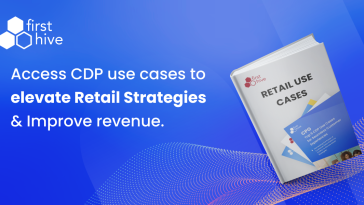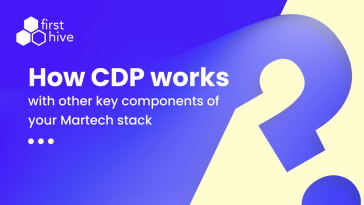
Why do you think the marketers all over the world talk about providing the best customer experience there is? It is so that by designing a solid customer experience journey, they can be persistent in reminding customers about their brand throughout the flow, without irritating them in the process.
When a customer interacts with your brand via any touchpoint, you should guide her through the experience and make sure you keep in touch with after she may or may not made the purchase. The customer journeys are the work of design thinking and creating a unique experience for a customer. For a small organization, with limited number of customers, it can be a simple flow that can be devised manually. But for medium and large organizations, the customer journeys are much more complex and require some data mining and artificial intelligence to work on it.
Look at this customer journey flow below:

Customer flows could as simple as the one shown above. To create such flow:
- You need to write a content which is relevant information for your customers and that ranks well in google search pages.
- Keep the relevancy in the website so that the customers doesn’t feel the disconnect.
- The interested customer goes through the website and finally decides to make a purchase.
- After the purchase, send a happy e-mailer to the customer, continuing with experience flow.
This is a perfect picture that happens only about 5-10% of all the customer flows you get in your website. What could be other common flows?

It is important to have a form for visitors to submit their contact details like email ID or mobile number. This is required to give a face to otherwise anonymous visitor data. You can place a “Contact Us” form, “subscribe for newsletter” form or even “Request for demo” form, see what works for your customers and add one or multiple forms in relevant places in your website. The data collected over these forms are pure opt-in holy grail and gives you an interested list of people for you to communicate to. You should schedule an automation campaign for this dynamic datalist.
Check out another example of customer flow:

The cart abandonment data is beautiful because it shows how highly interested your customer was in making a purchase but left for some reason – generally high price. In such situations, marketers normally send an automated email or App notification to the customer with discount coupon, expecting them to finish the transaction. If you’re willing to create a bit more complex flow, you may test your customer with a cart reminder email, wait for 1 day, then send them an App notification, again wait for 1 day, and still if customer doesn’t take action, you may go ahead and share the discount coupon. Orchestrating a customer journey can be as simple and as complex as you want them to be.
To design a supreme customer journey is an art – and a bit of science. To communicate with customers as part of your customer journey flow, you need two things – customer contact data and means to communicate. This is where an advance marketing technology tool can help you. For instance, FirstHive is a customer data platform, that connects with your multiple data sources, brings your customer data into one place and integrates data to create unique customer identities. Then, with the relevant information about every customer, FirstHive will enable you to trigger personalized campaigns over multiple channels like Email, SMS, Web push, Voice message etc. With its advance automation engine, you can build awesome customer flows with a click of a button.
To learn the science behind creating logical customer flows, click here







